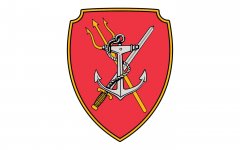I know this thread has been silent for a bit, but I wanted to update some of the NST info for those who might be new to the term.
I deployed on HMCS TORONTO in 2017, and during our RAMP (Rest and Maintenance Period) we spent a little more than 2 weeks alongside in Civitavecchia, Italy (just outside Rome). In order to allow our regular crew a good rotation of Duty/Work/Leave, and to facilitate a lot of our crew taking some form of HLTA/Reverse-HLTA/Third Location HLTA/whatever, we had the NST fly in to assist the ship by covering off our Force Protection duty watches.
For those who haven't had a foreign port duty watch, they usually split the crew into groups of 3, 4, or 5, depending on the type of deployment, port visit, duty requirements, etc. For this RAMP port visit, we were able to stand down our ship's force protection to allow the NST to cover that responsibility on the duty watch. This allowed more crew members for work parties to get the maintenance done, and more folks could have time off in the town or nearby city of Rome.
In the 14 days or so we spent in port on RAMP, I stood duty watch for 6 days, was a member of work party for 4 days, and got 4 full days off. We were delayed in leaving by about 2-3 days, (I think we might have been waiting for a part or something that got delayed in customs) so our command had everyone doing regular departmental work, (us getting the ship secured for sea, tidying up to go to sea at a moment's notice, etc.) and would let us go early if we weren't part of the duty watch.
Now, if we didn't have the NST for our RAMP period, we would've had to have roughly 20 or so sailors to cover the Force Protection watch, which would've cut down on both the folks resting and the folks helping with the work parties. It may not seem like a big deal, but remember that a bunch of our crew took their HLTA during RAMP, and they wouldn't have been able to do that if the NST wasn't there to cover their spots on the Force Protection duty watch.
This turned into more of an anecdotal explanation, and if you are still with me, thank you for putting up with my ramblings. The bottom line is this: When a member goes on HLTA, the CAF pays to replace that member with another who holds the same or similar qualifications so that the crew can still manage at sea. However, if you wait until a time when you are alongside for a long period (RAMP)you can supplement those members going on HLTA then with someone who can fulfill their duties on a duty watch. By training a specific corps of RCN members with the skills required for FP duty watches, you can fly 60-75 FP specialists out to cover duty watches, and allow 60-75 members to take their HLTA at that point. This is a HUGE morale booster for the crew because it almost guarantees that, with the hard work of a good LOG department, almost the entire crew will get HLTA. I don't know about your thoughts on the matter, but if I can get a chance to fly home for a week to break up a 6-7 month deployment, I'm taking it.
Hope this helps.
Cheers.



